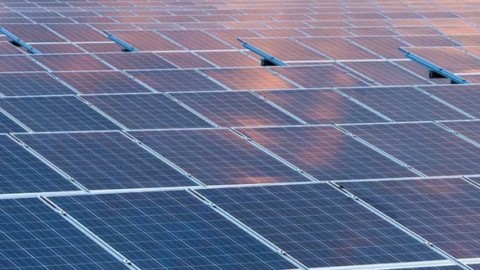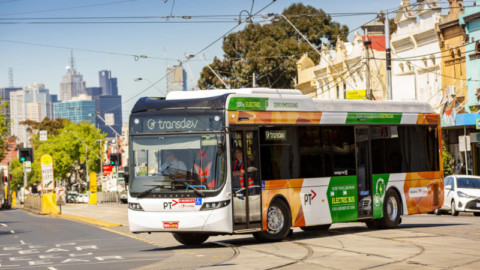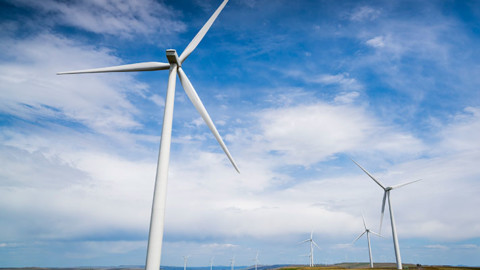The economic impacts from the COVID-19 pandemic have been felt all around the world and in every industry. The world of energy has not been immune to this; but amid the chaos, some clear opportunities for growth are beginning to emerge.
It’s now been more than six months since the first case of COVID-19 in Australia, and the pandemic has had an enormous impact on not just our way of life, but also on the way the energy industry operates in this country.
In a relatively short period of time, we’ve seen our usage patterns shift from commercial to residential; we’ve had to learn how to operate critical infrastructure while physically distancing and working from home; and we’ve provided significant support to vulnerable customers who are doing it tough under some of the worst economic conditions since the Great Depression.
But despite the challenges and change – or perhaps because of them – there are some incredible opportunities presenting themselves to those working in the industry. Opportunities to accelerate the transition to renewables; opportunities to displace some of our coal reliance with cleaner energy sources such as gas; and opportunities to provide a remote workforce with the cyber security tools it needs to operate safely.
A renewable future
As we’ve moved through the phases of the pandemic, a number of state governments have provided outlines on the role they want renewable energy to play in the economic rebuild from COVID-19.
The Northern Territory Government has announced a solar and battery stimulus package, aimed at growing jobs in the sector and aiding economic recovery from the COVID-19 pandemic.
Households and businesses in the Northern Territory now have the support of a new $6000 grant for the purchase and installation of solar PV systems with batteries and for adding batteries to existing systems.
WA’s Recovery Plan has been launched along with a $66.3 million investment in major renewable energy technologies to support Western Australia’s economic recovery from COVID-19.
Horizon Power’s Chief Executive Officer, Stephanie Unwin, said the State Government’s announcement would deliver a significant program of energy infrastructure projects, with $44.5 million being allocated to projects which are to be delivered by Horizon Power.
And the Tasmanian Government has released its draft Renewable Energy Action Plan, which lays out a strategy to leverage renewable energy to rebuild the state’s economy after COVID-19.
The plan identifies the “immense” potential in renewable energy to drive economic growth, attract investment and create jobs.
The draft Renewable Energy Action Plan outlines its vision to transform Tasmania into a world leader of clean, reliable and affordable energy, as well as a suite of actions to develop renewable energy generation in the state over the coming 20 years.
NCCC calls for gas-led economic recovery
The National COVID Coordination Commission (NCCC), established in March, is working on a number of strategies to lead Australia’s economic recovery from COVID-19, and one thing the NCCC is calling for is a significant investment in Australia’s natural gas industry.
According to a leaked report from the NCCC, expanding the gas industry could support a manufacturing-led economic recovery, with around 85,000-170,000 direct jobs, and hundreds of thousands of indirect jobs, created across the country from the expansion.
To achieve this, the report focuses on two main areas: growing advanced manufacturing, and creating a competitive domestic gas market. The NCCC suggests that the Federal Government approach the development of the gas industry in three phases.
The first phase recommends removing barriers by lifting the moratorium on coal seam gas in NSW and the remaining gas exploration moratoria in Victoria; reducing red and green tape; enforcing a use it or lose it arrangement on exploration areas; and looking at the accelerated development of the Beetaloo, Bowen and Perth basins.
Phase two explores how the government can create the market for domestic gas by lowering the cost of pipelines, underwriting new gas supply ventures, and considering tax incentives for priority infrastructure, among other suggestions. Stage two also sets the target of reducing gas prices to $6 a gigajoule.
And in stage three, the report suggests a $4/gigajoule gas price target, by establishing an ‘evergreen’ taskforce with the Australian Energy Market Operator and the Australian Competition and Consumer Commission, to manage and send clear information on prioritised basins and pipelines. It also sets a clear focus on proactively attracting foreign investment, opening up opportunities for overseas providers to do business in Australia.
Cyber security opportunities
There are also considerable opportunities for businesses providing cyber security services to the energy sector.
With a considerable portion of the industry now shifting to working remotely, the need to protect sensitive information relating to the operation of our networks is more critical than ever.
In June, Prime Minister Scott Morrison warned that Australian governments, businesses and political organisations were coming under an escalating series of cyber attacks from a sophisticated “state-based” hacker.
Later that month, the Federal Government announced $1.35 billion in funding to be spent over the next decade to boost the cybersecurity capabilities of the Australian Signals Directorate (ASD) and the Australian Cyber Security Centre (ACSC).
Where to now
Outside of Victoria, many parts of the country are starting to open up again. And while our lives may never return to our pre-COVID normal, we are starting to move towards an environment where we can start to take advantage of some of the new opportunities outlined above.
The industry is keen to move forward and make a start on these initiatives. Companies who can provide products and services that will enable this will be well placed to have a significant impact on the industry in 2020 and beyond.

















